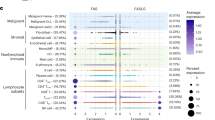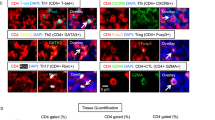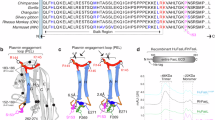Abstract
Fas (CD95/Apo-1) ligand is a potent inducer of apoptosis and one of the major killing effector mechanisms of cytotoxic T cells. Thus, Fas ligand activity has to be tightly regulated, involving various transcriptional and post-transcriptional processes. For example, preformed Fas ligand is stored in secretory lysosomes of activated T cells, and rapidly released by degranulation upon reactivation. In this study, we analyzed the minimal requirements for activation-induced degranulation of Fas ligand. T cell receptor activation can be mimicked by calcium ionophore and phorbol ester. Unexpectedly, we found that stimulation with phorbol ester alone is sufficient to trigger Fas ligand release, whereas calcium ionophore is neither sufficient nor necessary. The relevance of this process was confirmed in primary CD4+ and CD8+ T cells and NK cells. Although the activation of protein kinase(s) was absolutely required for Fas ligand degranulation, protein kinase C or A were not involved. Previous reports have shown that preformed Fas ligand co-localizes with other markers of cytolytic granules. We found, however, that the activation-induced degranulation of Fas ligand has distinct requirements and involves different mechanisms than those of the granule markers CD63 and CD107a/Lamp-1. We conclude that activation-induced degranulation of Fas ligand in cytotoxic lymphocytes is differently regulated than other classical cytotoxic granule proteins.
Similar content being viewed by others
Log in or create a free account to read this content
Gain free access to this article, as well as selected content from this journal and more on nature.com
or
Abbreviations
- Bim I:
-
bisindolylmaleimide I (Gö6850)
- CsA:
-
cyclosporin A
- FasL:
-
Fas ligand
- LAK:
-
lymphokine-activated killer cells
- NK:
-
natural killer
- PKA:
-
protein kinase A
- PKC:
-
protein kinase C
- PMA:
-
phorbol myristate acetate
- TCR:
-
T cell receptor
References
Pinkoski MJ, Brunner T, Green DR, Lin T . Fas and Fas ligand in gut and liver. Am J Physiol Gastrointest Liver Physiol 2000; 278: G354–G366.
Siegel RM, Chan FK, Chun HJ, Lenardo MJ . The multifaceted role of Fas signaling in immune cell homeostasis and autoimmunity. Nat Immunol 2000; 1: 469–474.
Wasem C, Frutschi C, Arnold D, Vallan C, Lin T, Green DR et al. Accumulation and activation-induced release of preformed Fas (CD95) ligand during the pathogenesis of experimental graft-versus-host disease. J Immunol 2001; 167: 2936–2941.
Kavurma MM, Khachigian LM . Signaling and transcriptional control of Fas ligand gene expression. Cell Death Differ 2003; 10: 36–44.
Nachbur U, Kassahn D, Yousefi S, Legler DF, Brunner T . Posttranscriptional regulation of Fas (CD95) ligand killing activity by lipid rafts. Blood 2006; 107: 2790–2796.
Mariani SM, Matiba B, Bäumler C, Krammer PH . Regulation of cell surface APO-1/Fas (CD95) ligand expression by metalloproteases. Eur J Immunol 1995; 25: 2303–2307.
Bossi G, Griffiths GM . Degranulation plays an essential part in regulating cell surface expression of Fas ligand in T cells and nature killer cells. Nat Med 1999; 5: 90–96.
Blott EJ, Bossi G, Clark R, Zvelebil M, Griffiths GM . Fas ligand is targeted to secretory lysosomes via a proline-rich domain in its cytoplasmic tail. J Cell Sci 2001; 114: 2405–2416.
He JS, Ostergaard HL . CTLs contain and use intracellular stores of FasL distinct from cytolytic granules. J Immunol 2007; 179: 2339–2348.
Trambas CM, Griffiths GM . Delivering the kiss of death. Nat Immunol 2003; 4: 399–403.
Lancki DW, Weiss A, Fitch FW . Requirements for triggering of lysis by cytolytic T lymphocyte clones. J Immunol 1987; 138: 3646–3653.
Berrebi G, Takayama H, Sitkovsky MV . Antigen-receptor interaction requirement for conjugate formation and lethal-hit triggering by cytotoxic T lymphocytes can be bypassed by protein kinase C activators and Ca2+ ionophores. Proc Natl Acad Sci USA 1987; 84: 1364–1368.
Brunner T, Yoo NJ, La Face D, Ware CF, Green DR . Activation-induced cell death in murine T cell hybridomas. Differential regulation of Fas (CD95) versus Fas ligand expression by cyclosporin A and FK506. Int Immunol 1996; 8: 1017–1026.
Anel A, Buferne M, Boyer C, Schmitt-Verhulst A-M, Golstein P . T cell receptor-induced fas ligand expression in cytotoxic T lymphocyte clones is blocked by protein tyrosine kinase inhibitors and cyclosporin A. Eur J Immunol 1994; 24: 2469–2476.
Stinchcombe JC, Griffiths GM . Secretory mechanisms in cell-mediated cytotoxicity. Annu Rev Cell Dev Biol 2007; 23: 495–517.
Clark R, Griffiths GM . Lytic granules, secretory lysosomes and disease. Curr Opin Immunol 2003; 15: 516–521.
Andzelm MM, Chen X, Krzewski K, Orange JS, Strominger JL . Myosin IIA is required for cytolytic granule exocytosis in human NK cells. J Exp Med 2007; 204: 2285–2291.
Kagi D, Seiler P, Pavlovic J, Ledermann B, Burki K, Zinkernagel RM et al. The roles of perforin- and Fas-dependent cytotoxicity in protection against cytopathic and noncytopathic viruses. Eur J Immunol 1995; 25: 3256–3262.
Hahn S, Gehri R, Erb P . Mechanism and biological significance of CD4-mediated cytotoxicity. Immunol Rev 1995; 146: 57–79.
Griner EM, Kazanietz MG . Protein kinase C and other diacylglycerol effectors in cancer. Nat Rev Cancer 2007; 7: 281–294.
Abraham I, Wolf CL, Sampson KE, Laborde AL, Shelly JA, Aristoff PA et al. K252a, KT5720, KT5926, and U98017 support paclitaxel (taxol)-dependent cells and synergize with paclitaxel. Cancer Res 1994; 54: 5889–5894.
Villunger A, Ghaffari-Tabrizi N, Tinhofer I, Krumbock N, Bauer B, Schneider T et al. Synergistic action of protein kinase C theta and calcineurin is sufficient for Fas ligand expression and induction of a crmA-sensitive apoptosis pathway in Jurkat T cells. Eur J Immunol 1999; 29: 3549–3561.
Villalba M, Kasibhatla S, Genestier L, Mahboubi A, Green DR, Altman A . Protein kinase ctheta cooperates with calcineurin to induce Fas ligand expression during activation-induced T cell death. J Immunol 1999; 163: 5813–5819.
Grybko MJ, Pores-Fernando AT, Wurth GA, Zweifach A . Protein kinase C activity is required for cytotoxic T cell lytic granule exocytosis, but the theta isoform does not play a preferential role. J Leukoc Biol 2007; 81: 509–519.
Gekeler V, Boer R, Uberall F, Ise W, Schubert C, Utz I et al. Effects of the selective bisindolylmaleimide protein kinase C inhibitor GF 109203X on P-glycoprotein-mediated multidrug resistance. Br J Cancer 1996; 74: 897–905.
Baillie G, MacKenzie SJ, Houslay MD . Phorbol 12-myristate 13-acetate triggers the protein kinase A-mediated phosphorylation and activation of the PDE4D5 cAMP phosphodiesterase in human aortic smooth muscle cells through a route involving extracellular signal regulated kinase (ERK). Mol Pharmacol 2001; 60: 1100–1111.
Dell'Acqua ML, Scott JD . Protein kinase A anchoring. J Biol Chem 1997; 272: 12881–12884.
Qian J, Chen W, Lettau M, Podda G, Zornig M, Kabelitz D et al. Regulation of FasL expression: a SH3 domain containing protein family involved in the lysosomal association of FasL. Cell Signal 2006; 18: 1327–1337.
Kessler B, Hudrisier D, Schroeter M, Tschopp J, Cerottini JC, Luescher IF . Peptide modification or blocking of CD8, resulting in weak TCR signaling, can activate CTL for Fas- but not perforin-dependent cytotoxicity or cytokine production. J Immunol 1998; 161: 6939–6946.
Brossart P, Bevan MJ . Selective activation of fas/fas ligand-mediated cytotoxicity by a self peptide. J Exp Med 1996; 183: 2449–2458.
Cao W, Tykodi SS, Esser MT, Braciale VL, Braciale TJ . Partial activation of CD8+ T cells by a self-derived peptide. Nature 1995; 378: 295–298.
Kataoka T, Shinohara N, Takayama H, Takaku K, Kondo S, Yonehara S et al. Concanamycin A, a powerful tool for characterization and estimation of contribution of perforin- and Fas-based lytic pathways in cell- mediated cytotoxicity. J Immunol 1996; 156: 3678–3686.
Blott EJ, Griffiths GM . Secretory lysosomes. Nat Rev Mol Cell Biol 2002; 3: 122–131.
Faroudi M, Utzny C, Salio M, Cerundolo V, Guiraud M, Muller S et al. Lytic versus stimulatory synapse in cytotoxic T lymphocyte/target cell interaction: manifestation of a dual activation threshold. Proc Natl Acad Sci USA 2003; 100: 14145–14150.
Hane M, Lowin B, Peitsch M, Becker K, Tschopp J . Interaction of peptides derived from the Fas ligand with the Fyn-SH3 domain. FEBS Lett 1995; 373: 265–268.
Janssen O, Qian J, Linkermann A, Kabelitz D . CD95 ligand – death factor and costimulatory molecule? Cell Death Differ 2003; 10: 1215–1225.
Wenzel J, Sanzenbacher R, Ghadimi M, Lewitzky M, Zhou Q, Kaplan DR et al. Multiple interactions of the cytosolic polyproline region of the CD95 ligand: hints for the reverse signal transduction capacity of a death factor. FEBS Lett 2001; 509: 255–262.
Lettau M, Qian J, Linkermann A, Latreille M, Larose L, Kabelitz D et al. The adaptor protein Nck interacts with Fas ligand: guiding the death factor to the cytotoxic immunological synapse. Proc Natl Acad Sci USA 2006; 103: 5911–5916.
Zuccato E, Blott EJ, Holt O, Sigismund S, Shaw M, Bossi G et al. Sorting of Fas ligand to secretory lysosomes is regulated by mono-ubiquitylation and phosphorylation. J Cell Sci 2007; 120: 191–199.
Wasem C, Arnold D, Saurer L, Corazza N, Jakob S, herren S et al. Sensitizing antigen-specific CD8+ T cells for accelerated suicide causes immune incompetence. J Clin Invest 2003; 111: 1191–1199.
Acknowledgements
We thank Gillian Griffiths for the GFP-FasL expression plasmid and helpful discussions, Shida Yousefi for technical advice for the confocal microscopy, Gottfried Baier for conceptual and technical support, Verena Niggli for inhibitors and the Brunner lab for precious help. This study was supported by grants from the Swiss National Science Foundation and Oncosuisse to TB.
Author information
Authors and Affiliations
Corresponding author
Additional information
Edited by JP Medema
Rights and permissions
About this article
Cite this article
Kassahn, D., Nachbur, U., Conus, S. et al. Distinct requirements for activation-induced cell surface expression of preformed Fas/CD95 ligand and cytolytic granule markers in T cells. Cell Death Differ 16, 115–124 (2009). https://doi.org/10.1038/cdd.2008.133
Received:
Revised:
Accepted:
Published:
Issue date:
DOI: https://doi.org/10.1038/cdd.2008.133
Keywords
This article is cited by
-
JNK1 and ERK1/2 modulate lymphocyte homeostasis via BIM and DRP1 upon AICD induction
Cell Death & Differentiation (2020)
-
Effector granules in human T lymphocytes: the luminal proteome of secretory lysosomes from human T cells
Cell Communication and Signaling (2011)
-
Control of death receptor ligand activity by posttranslational modifications
Cellular and Molecular Life Sciences (2010)
-
Identification of SH3 domain interaction partners of human FasL (CD178) by phage display screening
BMC Immunology (2009)



